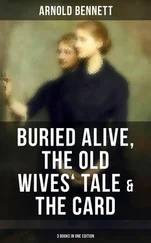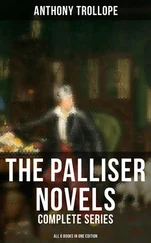Descriptive Discourse deals with the explanation of persons or things. “Description” means: “The act of describing, defining, or setting forth the qualities, characteristics, properties or features, of anything in words, so as to convey an idea of it to another.” In order to describe a thing we must state its various properties, qualities, attributes and relations. In order to do this, we must first analyze or “take apart” the thing itself—we must view it in its parts as well as a whole. We must be able to take the thing apart, mentally, and then put it together again. As Coleridge says: “Description seems to be like taking the pieces of a dissected map out of its box. We first look at one part and then at another, then join and dovetail them, and when the successive acts of attention have been completed, there is a retrogressive effort of mind to behold it as a whole.”
Descriptive Discourse may be divided into two general classes, viz., (a) Analytical Description; and (b) General Description.
In Analytical Description , the various parts, qualities, attributes, properties, etc., are considered and explained separately and apart, and without reference to each other or to the whole. In other words, the various items composing and constituting the whole thing are catalogued separately . This form of description is met with in technical and scientific discourse, and to a certain extent in legal statements. The “specifications” for the building of a house; the scientific description of an animal; the legal statement of the details of a patent, description of a piece of real estate, etc., give us examples of this form of description. The following Analytical Description of the Barn Swallow, given by Prof. Edward A. Samuels, will give an excellent example of this form of description:
“BARN SWALLOW ( Hirundo horreorum ): Tail very deeply forked; outer feather of tail several inches longer than the inner, very narrow towards the end; above glossy-blue, with concealed white in the middle of the back; throat chestnut; rest of lower part reddish-white, not conspicuously different; a steel-blue collar on the upper part of the breast, interrupted in the middle; tail feathers with a white spot near the middle, on the inner web. Female with the outer tail feathers not quite so long. Length, six and ninety one-hundredths inches; wing, five inches; tail, four and fifty one-hundredths inches.”
In General Description , the thing is considered as a whole, the general appearance being considered and explained. For instance, in the case of a house , the general appearance, shape, position, location, color, style of architecture, size, probable cost, general effect, etc., would be considered and described, without regard to the details of Construction contained in the “specification” which were considered in detail in the Analytical Description. In the case of the barn-swallow , the general appearance of the bird, its peculiar wings and long tail, its graceful flight, its color, its nest and dwelling-place, would be considered instead of the technical, scientific description made necessary in a scientific Analytical Description such
as quoted above from Prof. Samuels.
General Description may be either literal or impressional . By literal description is meant a description “according to the primitive meaning or letter; not figurative or metaphorical; formally, plainly and clearly expressed.” By impressional description is meant a description in metaphor or other figure of speech, or else by means of suggestive terms which give the outlines and excite the imagination to fill in the picture. The term arises from “Impressionism,” which is defined as: “The system in art or literature, which, avoiding elaboration, seeks to depict scenes in nature as they are first vividly impressed on the mind of the artist or writer.”
Literal description appeals to the intellect; impressional description appeals to the imagination. We have familiar examples of literal description in business conversation and correspondence, and in ordinary newspaper writing. Examples of impressional description are given in our preceding chapters in which figures of speech are considered. Dickens and Thackeray were masters of this form of description. The following from Dickens furnishes an excellent example:
“‘A slight figure,’ said Mr. Peggotty, looking at the fire, ‘kiender worn; soft, sorrowful, blue eyes; a delicate face; a pritty head, leaning a little down; a quiet voice and way—timid a’most. That’s Em’ly! * * * * Cheerful along with me; retired when others is by; fond of going any distance fur to teach a child, or fur to tend a sick person, or fur to do some kindness tow’rds a young girl’s wedding (and she’s done a many, but has never seen one); fondly loving of her uncle; patient; liked by young and old; sowt out by all that has any trouble. That’s Em’ly!’”
Narrative Discourse deals with the telling the story of acts or events—the relating of the history of an occurrence. “Narrate” means “to tell, or relate; to recite or rehearse as a story, etc.” Narrative Description, also, may be either (a) literal ; or (b) impressional , the definitions given under the head of “Description” applying equally in this case. And in the same way, Narrative Discourse may be considered in its phases of (a) analytical ; and (b) general ; according to its nature. Hyslop says: “Narration is that process of explanation which presents a theme in its time relations , or which exhibits events in their proper order. * * * In pure mathematical narration the principle must be in chronological order. In pure logical narration the principle must be logical classification and connection of events without regard to other events in the same time. In many instances, however, it is possible and will be proper to combine both processes. This may be done in various degrees according as the object of the narration permits it.”
Hill makes the following valuable comments upon Narrative Discourse: “As the main purpose of narration is to tell a story, a narrative should move from the beginning to the end, and it should move with method. A narrative may move rapidly * * * or slowly * * * but movement it must have. * * * Every story, whether it moves swiftly or slowly, is successful or unsuccessful as a narrative according as it is or is not interrupted. * * * It is not enough that a narrative should move; it should move forward, it should have method . * * * A narrator fails as a narrator in so far as he does not go straight on from the beginning to the end. A story teller who runs this way and that in pursuit of something which is entirely aside from his narrative, and who returns to his subject as if by accident, is perhaps the most vexatious of all who try to communicate by language with their fellow beings. * * * To secure method in movement, a writer (or speaker) should keep constantly in mind the central idea of his narrative; about that central idea he should group all other ideas according to their relative value and pertinence.”
The student will do well to read the stories of Kipling, Poe, Hawthorne, and Maupassant in order to “catch” the spirit of the true narrative style. Some of Richard Harding Davis’s short stories are well adapted for such study. And Stevenson, of course, will ever be worthy of study, analysis, and of great value as a model of narrative style. The following from Stevenson’s
“Will o’ the Mill” will give an idea of the strength and simplicity of his style. Describing the final scene in the life of the old “Will” who from boyhood had dwelt in the old mill, preaching and practicing his quaint philosophy of life, he says:
Читать дальше












